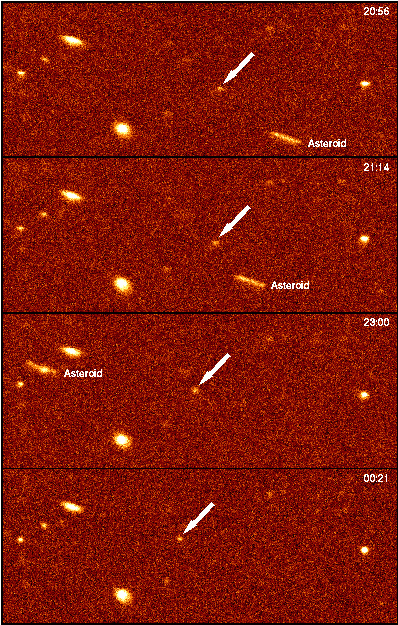
The orbits (and thus periods) of comets often change significantly. Why?
They come in two types:
Short-period comets orbit pretty much in the
ecliptic,
and are prograde.
Long-period comets don't orbit in the ecliptic; their orbits are isotropic -- in all directions.
These are often the brightest and most impressive comets. Why?
Based on the orbits of long period comets, in 1950 Jan Oort proposed that a distance, spherical distribution of cometary nuclei surrounding the solar system.Distance: 3,000 - 100,000 AU (Pluto=30 AU, nearest star=275,000 AU)
- Why distant?
- Why spherical?
Number of Comets: > 1012
Mass: ~ 10 -25 Mearth (or bigger!)

The Oort Cloud has never been seen -- objects are a million times fainter than the faintest things we can see even with big telescopes.
- Objects did not form there, they were scattered out of the solar system by the giant planets.
- Passing objects (stars, gas clouds) have randomized their orbits into a spherical cloud. (Inner portions of the cloud have probably not been totally randomized, and remain flattened).
- Passing objects scatter Oort cloud objects into the solar system -- the origin of long period comets. (Periodic bombardment?)
The Oort cloud cannot explain the origin of the short-period comets. There must also be a more nearby, flattened distribution of comet nuclei -- the Kuiper Belt. |
 |